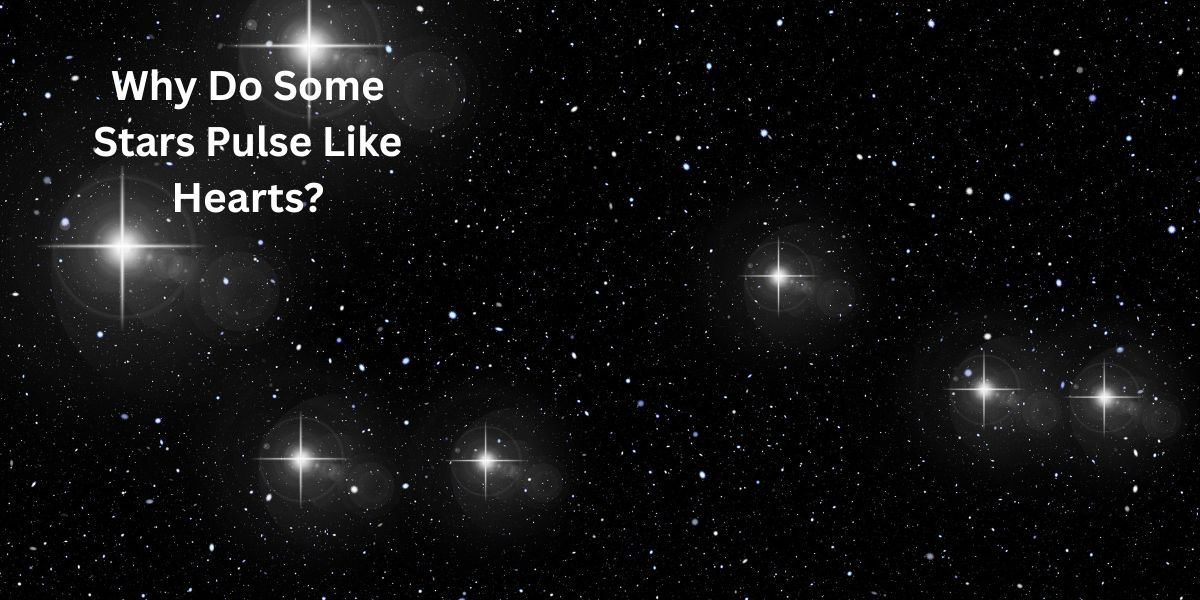Have you ever looked up at the night sky and noticed a star that seems to flicker or change brightness? Some stars don’t shine steadily—instead, they pulse like a heartbeat, growing brighter and dimmer over time. These special stars are called pulsating stars, and they behave like cosmic light bulbs that slowly brighten and fade.
But why do they do this? Just like our hearts beat to keep us alive, some stars expand and shrink, causing their light to change. This happens because of the way these stars burn their fuel and balance their energy. Some pulse quickly, while others take days or even years to complete one “heartbeat.”
So, what makes these stars act this way? Let’s find out!
What Are Pulsating Stars?
Pulsating stars are stars that grow bigger and smaller in a repeating cycle. When they expand, they get brighter. When they shrink, they become dimmer. This pulsing happens because of changes inside the star.
- Example: Imagine blowing up a balloon and letting the air out slowly. The balloon gets bigger, then smaller. Pulsating stars do the same, but with light!
- Fun Fact: Our Sun doesn’t pulse like this. Only certain types of stars do.
These stars are important because scientists can study their pulses to learn about their size, age, and what they’re made of.
Why Do Stars Pulse?
Stars pulse because of balance—or sometimes, a lack of balance. Inside a star, two big forces are always fighting:
- Gravity – Pulls everything inward, trying to crush the star.
- Pressure – Pushes outward from heat and energy, trying to expand the star.
When these forces don’t stay perfectly balanced, the star starts to expand and contract, making it pulse.
- Comparison: Think of a spring bouncing up and down. Gravity pulls it down, but the spring’s energy pushes it back up. Stars do something similar!
What Types of Stars Pulse?
Not all stars pulse—only certain kinds. Here are the most common ones:
Cepheid Variables
- Bright stars that pulse in a regular pattern.
- Scientists use them to measure distances in space.
RR Lyrae Stars
- Smaller and older than Cepheids.
- Pulse quickly, sometimes in just a few hours.
Mira Variables
- Red giant stars that pulse very slowly.
- One pulse can take months or even years!
How Do Scientists Study Pulsating Stars?
Astronomers use telescopes to watch how these stars change in brightness. By measuring their pulses, they can learn:
- How far away the star is.
- How old it is.
- What elements it’s made of.
Fun Fact: Some telescopes, like NASA’s TESS, are specially designed to find and study pulsing stars!
Can We See Pulsating Stars from Earth?
Yes! Some pulsating stars are bright enough to see without a telescope. One famous example is Polaris (the North Star), which is a very slight variable star.
- Best Time to Watch: On a clear night, look for stars that seem to flicker more than others. Some of them might be pulsating!
The Heartbeat of the Universe
Pulsating stars are like the heartbeat of the universe—they grow and shrink, telling us secrets about space. By studying them, scientists learn more about how stars live, age, and even how galaxies form.
📌 Frequently Asked Questions
Do all stars pulse?
No, only certain types of stars pulse. Our Sun, for example, stays at a steady brightness.
How long does it take for a star to pulse?
It depends on the star. Some pulse in hours, while others take years
Why are pulsating stars important?
They help scientists measure distances in space and understand how stars work.
Can a pulsating star explode?
Most don’t, but some old pulsating stars may eventually become supernovae.
What is the most famous pulsating star?
Delta Cephei is one of the most well-known. It helped scientists discover how to measure space distances.
Do pulsating stars make sound?
In a way, yes! Scientists can turn their pulses into sound waves, creating “star music.
Can a star stop pulsing?
Yes, if it runs out of fuel or changes its structure, it may stop pulsing.
Are pulsating stars rare?
Not extremely rare, but only certain types of stars have this behavior.
How do pulsating stars affect Earth?
They don’t affect Earth directly, but studying them helps us understand the universe better.
Can I see a pulsating star with my eyes?
Some, like Mira, are bright enough to see without a telescope if you know where to look!
